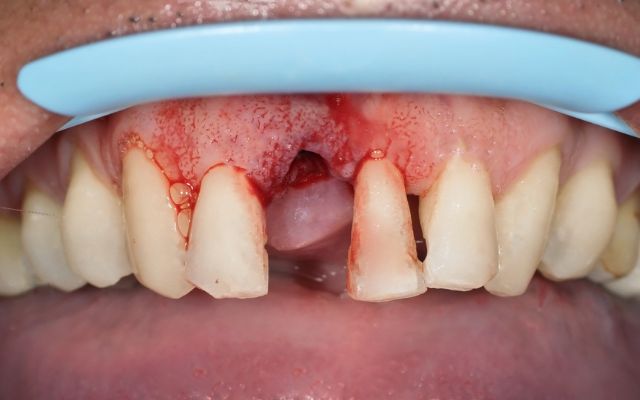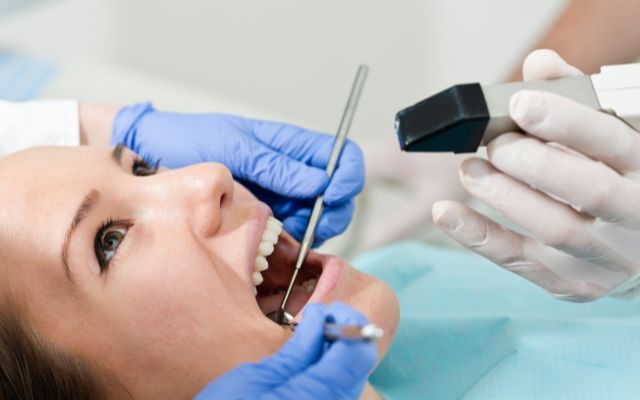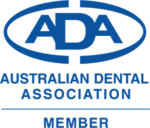Avulsed Tooth: Causes, Treatments & Preventions
Avulsed Tooth: A tooth avulsion occurs when a permanent tooth is lost. Accidents and injuries might cause a tooth to fall out, you must seek treatment immediately to save your teeth. In this article, I will provide you with information about causes, symptoms of knocked out teeth as well as Avulsed Tooth treatment and prevention.
Let’s get started!
Overview of Avulsed Tooth

Avulsion is one of the most serious dental injuries and the outcome for an avulsed permanent tooth is dependent on the actions taken at the place of accident.
When a tooth is totally dislodged from its socket, it is avulsed. Avulsed teeth are dental emergencies that necessitate prompt care. Try immediately reinserting your tooth to save it. Treatments administered within 30 minutes to one hour have the highest probability of success.
If you are unable to see a healthcare physician immediately, save the tooth in milk or saline solution until you can. Your healthcare professional will typically attempt to reconnect the knocked-out tooth using reimplantation.
Who May Experience An Avulsed Tooth?
If the tooth has been out of the socket for less than 20 minutes, reimplant it promptly. Rinse the teeth gently with saline. Using moderate irrigation and suction, remove the bulk of the clot from the socket to make room for the root (small-tipped).
Each year, almost 5 million people in the United States have teeth knocked out. The majority of oral injuries occur in children ages 7 to 11. Males sustain twice as many dental injuries as females, dental trauma
Here some symptoms about Gum Abscess include two stages: Early and Late Tooth
Some Symptoms of a Knocked-out Tooth
A tooth that has been avulsed is one that has been fully knocked out of the mouth. When a tooth is avulsed, it is completely removed from the mouth. Possible symptoms of an avulsed tooth include:
- The absence of a tooth in the mouth.
- Mouth ache.
Losing a tooth may result in bleeding. If so, bite down on a clean handkerchief or small washcloth placed over the socket. Avoid aspirin, as it can exacerbate bleeding. Ask your healthcare practitioner which pain relievers are most appropriate for you if you are in pain.
Please get medical attention for any head trauma, especially if you experience dizziness or nausea. They can rule out the possibility of any other injuries.
What Causes Avulsion of A Tooth?
Significant force is necessary to eject a tooth from the mouth. These are the most frequent causes of avulsed teeth:
- Falls.
- Bicycle accidents.
- Sports injuries.
- Traffic accidents.
- Assaults.
A tooth might be dislodged by a sports injury. Examples of sports injuries that can result in tooth avulsion are:
- Football.
- Hockey.
- Lacrosse.
- Martial arts.
- Rugby.
- Skating.
Avulsed Tooth Treatments

To save an avulsed tooth, prompt treatment is required. Consult your dentist as soon as possible for further treatment of avulsed teeth. Call your dentist or the dentist closest to you to find out how to receive emergency treatment and salt solution.
You should initially administer first aid to the avulsed tooth at the scene of the injury. You can take the following steps:
- Crown your tooth should be grasped (white chewing surface). Avoid touching the plant’s root (the part that usually holds your tooth to the bone below your gum line).
- Rinse your teeth with water or milk to eliminate plaque. Do not use soap, and do not scrub or dry your teeth.
- Root first, gently replace the tooth in its socket. Avoid contacting the root of your tooth while holding it by the crown.
- Bite down on a napkin, gauze, or handkerchief to secure your tooth.
- See a dentist as soon as possible.
Only permanent teeth that have been knocked out should be reattached. There is a risk that attempting to reimplant baby teeth would harm the developing permanent teeth. In both circumstances, you should seek dental care as soon as possible.
If you are unable to reinsert the tooth, keep it moist until you can visit a dentist. If possible, avoid placing your teeth in water. Water can damage the surface cells of roots. You can insert a tooth into:
- A cup of milk.
- A salt solution designed specifically to preserve avulsed teeth, commonly available in first
- Aid kits for children.
- Your cheek, where saliva keeps it wet.
- In saline solution.
NOTE:
You may have accidentally swallowed or aspirated your teeth. Visit your doctor promptly for a chest X-ray to determine if your tooth has entered your lungs.
Typically, swallowed teeth are innocuous. In some situations, the patient may additionally require a general dental splint. The splint secures the relocated tooth. The splint is typically worn for two weeks, during which time the roots reattach to the socket.
Never attempt to reinsert merely a portion of a tooth into its socket. Consult a dentist as soon as possible. Before fixing your tooth, they may conduct a dental X-ray to detect root damage.
You can explore in avulsed permanent teeth research.
Take Oral Care Of A Tooth Avulsion
To aid in tooth protection following reinsertion, you should:
- Avoid very cold or overly hot foods.
- After every meal, brush your teeth with a soft toothbrush.
- For two weeks, only soft foods and drinks may be consumed.
- Rinse twice daily for two weeks with antimicrobial chlorhexidine mouthwash.
- As needed, use nonsteroidal anti-inflammatory medicines (NSAIDs) to alleviate pain.
In addition, you will need to visit your dentist regularly for checkups on your reattached tooth. Until your provider gives you the go-ahead, you must avoid contact sports.
Preventions for Avulsed Tooth
There are a few things that can be done in the first few weeks after a tooth has been transplanted to promote optimal recovery. These consist of:
- Avoiding contact sports engagement.
- Soft diet for up to 2 weeks. You may then resume normal operations.
- After each meal, brush your teeth with a soft toothbrush.
- Utilizing a chlorhexidine mouth rinse twice daily for up to fourteen days.
By wearing a mouthguard while playing sports, you can reduce tooth loss. Especially during contact sports such as football and hockey, mouthguards safeguard teeth from trauma.
Do not:
- Allow the tooth to dry naturally or place it in tissue paper.
- The tooth should be stored in water or a heated liquid.
- Place the tooth in the pocket.
- Delay obtaining medical care.
Your dentist should monitor your implanted teeth at regular intervals. When a tooth develops pulp necrosis or is completely developed, root canal therapy will be performed.
When a tooth is avulsed, the pulp within the tooth and the periodontal ligament that surrounds the tooth are both damaged.
Avulsion damage to a fully developed permanent tooth typically results in pulpal death (necrosis). The infected pulp tissue will subsequently require root canal therapy to be removed. If the circumstances are favorable, pulpal healing may occur in an incompletely formed tooth.
The tooth is “removed” from the socket during avulsion due to the ripping of the periodontal ligament. The root surface may be damaged as a result of the tooth crushing or scraping against the socket. This causes root surface irritation, which can lead to ankylosis or root resorption of the tooth.
Tooth Avulsion Dental - Urgent Care Dentist Near Me
Despite the fact that proper preventative treatment may aid in preventing certain tooth diseases, dental emergencies may occur on occasion. In dental emergencies, time is of the essence in order to prevent damage.
Certain emergency departments and urgent care dental clinics assist patients with urgent needs 24 hours a day, seven days a week.
A tooth avulsion occurs when a permanent tooth is lost. Accidents and injuries can result in tooth loss. Avulsed tooth patient must seek treatment immediately in order to save your tooth. You can manually reinsert your tooth or store it in liquid. Then you should seek further treatment from a dentist.
Spring Orchid Dental Emergency Clinic in Bassendean has emergency dentists that can assist with traumatic dental injuries and other oral health problems.
FAQs
Why is The Tooth Not Submerged in Water?
The pH and osmolality of tap water are 7.4 to 7.79 and 30 mOsm/kg, respectively. It is unsuitable for use as a storage media for avulsed teeth due to its bacterial contamination, hypotonicity, nonphysi-ological pH, and osmolality, all of which promote the lysis of PDL cells.
When Is It Appropriate To Transplant A Tooth That Has Been Lost?
An avulsed permanent tooth is reinserted manually into its socket as soon as possible following avulsion. A temporary splint will be used to immobilize the reimplanted tooth, facilitating the healing of the periodontal ligament: periodontal ligament, permanent tooth, permanent teeth, root canal, dental avulsion, dental treatment, dental trauma, root surface.
Where Should An Avulsed Tooth Be Placed?
It can be placed in a glass of milk. If milk is scarce, it can be stored between the gum and cheek in the mouth. A child may not be able to securely retain the tooth. In this instance, the tooth can be placed in the child’s saliva.





